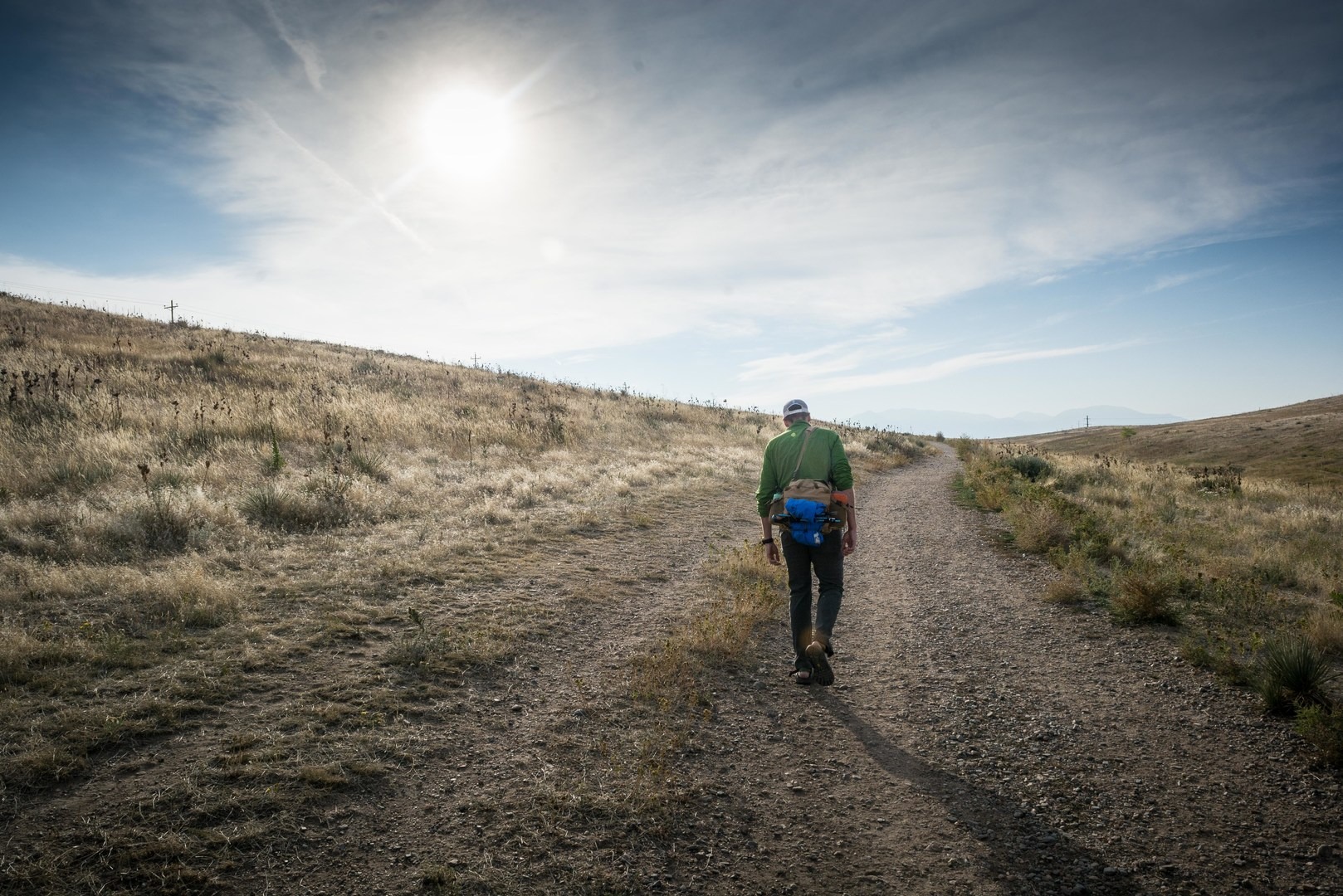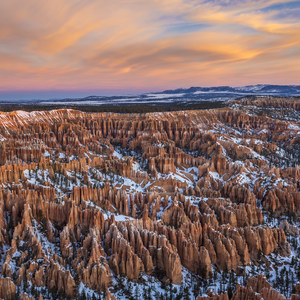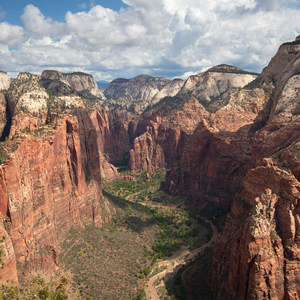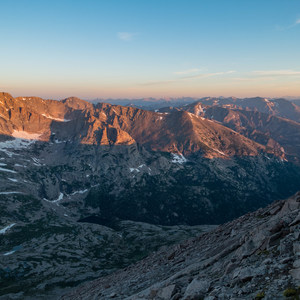Mountainsmith Tanack 10L Lumbar Pack specs
- Volume: 10L (15L with outer pockets)
- Weight: 1lb 13oz
- Dimensions: 11.75 x 12.25 x 5.5 inches (H x W x D)
- Water resistant 5000mm PU fabric panels
- Removable rain cover
- Removable waist belt
- Interior detachable accessory bag
- 610d CORDURA , EVA and high density foam construction
Where to get it
- Price: $99.95
- Mountiansmith
- Amazon
- REI
The Bottom Line: Whether you are a photographer or not, this durable pack provides an array of options to pack and carry your gear for a day in the wild. Part of Mountainsmith's "Tough as Nails" line, the Tanack 10L provides enough room to carry a light camera setup, day hike essentials, and a few extra layers to boot. The bag was designed by photographer Chris Burkard as a go-to "versatile solution for photographers and adventurers," and I've put it thought its paces at national parks and Front Range trails alike. After throwing it around, dropping it a few times, and generally abusing the pack, I can confidently say this thing is built to last and provides plenty of load out options to meet your needs. You just need to get crafty when packing it.
IMPORTANT NOTE: If you plan to use this for your photo gear, Mountainsmith reccommendeds that you purchase a small or medium "Kit Cube" ($49.95 to $59.95) to protect your gear. The $99 price point gets you only the pack. If you pack your gear well or use a single camera and lens setup, this pack is padded enough that you almost don't need one; just be careful.

Mountainsmith has been making lumbar packs for the outdoor world for 35 years. For 31.5 of those years, I was never convinced that I wanted one. When I picked up photography as a hobby years ago, I was constantly searching for a solution that would let me carry my camera into the woods with me. Most of the time I simply threw it in a pack and never took it out again. I went and purchased a hiking-specific camera backpack few years back only to find that it could fit my camera gear and nothing else (a bottle of water if I left a lens at home). It was great for road trips and protected my gear well, but I was very hesitant to take the pack on a hike, so I defaulted back to my regular daypack and backpack on trips, and the camera never left the pack more than a handful of times. Enter the Tanack 10L.
I have a few pre-requisites for any pack I am considering:
- At least one outer stretch water bottle holder that I can easily reach without needing help or having to take the pack off (I hate digging in my pack for a water bottle. Having to take the pack off to pull the bottle out of the side pocket is equally as frustrating to me).
- Easily accessible pockets and main compartment.
- Easy to open zippers (I am often hiking in the cold, and my fingers tend to go numb unless I wear mittens, making tiny zippers difficult at best to open).
- Comfortable to carry (I have a short torso despite being tall, and most backpacks waist bands don't fit me that well).
- Durable (I am abusive with my stuff; ultralight gear and I have tried, but we are not compatible).
The Tanack 10L ticks most of those boxes with a few quirks to consider:
First and foremost, there are two heavily built water bottle holders on the outside that easily fit a Nalgene on both sides. I mention "heavily built," because in most of the packs I have owned, the mesh water bottle pockets always seem to snag or wear out before the rest of the pack. These have a solid strip of CORDURA running up from the bottom and along the center of the pocket, adding a ton of durability while retaining its ability to stretch. The pockets are easy to access if you have long arms. If your arms are shorter, the lumbar design allows you can loosen the waist belt and swing the pack around in front of you. Done in this manner, you can easily reach both of the side water bottle pockets and the front zippered pocket and the zippered main compartment without taking the pack off. While trekking in Zion National Park, I spent a ton of time scraping the pack against rocks and brush as we navigated our way up the toward Pine Creek Waterfall, but the pack was unscathed. At some points I even swung the pack in front of me to get through a tight spot between some rocks. The biggest downside to being able to swing the pack around is that I have to constantly loosen and then re-tighten the waist belt. This is not a major inconvenience given the huge advantage of never having to take the pack off, but it is something worth noting.
The Tanack's main compartment has a very burly zippered opening with large zipper pulls that are easy to grab. The zipper itself is a bit resistant to being opened, but I give that a plus one to the Tanack since it means that the zipper won't open on its own from the usual bumping and movement of hiking. Having used the pack with heavy gloves, mittens, and frozen hands, the only issue I have had with the main compartment zipper pulls was user error. I would usually zip both all the way to one side, and generally it was the opposite side I reached for first, meaning I would often have to swing the pack around in front to open it. A simple fix is moving them to the middle before swinging the pack back around. The front pocket has a smaller zipper and a medium length string zipper pull. While not as easy to grab with gloves or mittens, it is doable. We were shooting photos at sunset, sunrise, and in the middle of the night at Bryce Canyon National Park, which meant gloves for me; the large zipper pulls were a huge plus, but I did struggle with the front pocket pull and often needed to take my gloves off. Because of this, I limited the items I kept in that pocket to non-essentials and kept the more frequently used items in the side water bottle pockets or main compartment. It would be an easy fix to lengthen the front pocket zipper pull if needed.
As far as comfort, this was the area where I had the biggest struggle. Your lumbar spine is the section between diaphragm and sacrum, and it is generally referred to as your lower back. This section is different for every person in length and width. I was used to carrying a backpack, and it was a large adjustment to just wearing a waist belt. The biggest issue I had was with the pack slipping down as I walked (as my fiancée never fails to remind me, I have no behind, which in this case might be helpful). Mountainsmith includes a small adjustable shoulder strap with a light pad to help prevent this. In theory, it is a simple and effective solution; however, I found the shoulder strap to be too skinny and uncomfortable, and it often dug into my shoulder. I was constantly switching shoulders, sometimes wearing it across my body and others on the same shoulder side (it tends to default to a side for me). Over time I found that the pack would slip down less frequently if I raised the pack up a bit higher onto or above my waist. Frequently the shoulder pad would also slip around, and I found the the proper height of the pack meant that the plastic cam buckle usually sat in an uncomfortable spot. Over time I found my body adjusted to having the weight on one side as opposed to having it distributed across both, and I found that the cam dug in less if I adjusted it in front of my shoulder. This is my biggest critique of this pack, but I have come from years of wearing backpacks, and I have found that the more I have used the pack, the more comfortable I have become with it. While they do not state on their website that the "strapettes" fit the Tanack, in comparing it with their other compatible packs, it appears they would fit. The shoulder strap and slipping are my biggest complaint about the Tanack, and the "strapettes" might be a great solution that I am likely to try soon.
The durability of the Tanack is without a doubt one of it's biggest strengths. Made from CORDURA fabric, it is as rugged as they come (CORDURA is used in everything from travel luggage to military gear and is renowned for its durability. Most of the the common wear points on outerwear use CORDURA). Mountainsmith's brand revolves around being "Forged for Life," and every product I have owned from them has certainly appeared to be built that way. This pack looks like I would be able to hand it down to my kids someday, and it has already survived a ton of scrapes, falls, and general abuse already (I tend to lob things into my car), and it still looks brand new. While the upfront cost can seem expensive, I have no doubt I will be using this pack far into the future without issues. The biggest downside to this construction is its weight. Burly and durable generally do not mean ultralight. Given that it is technically a camera bag, I would say that is a good thing, but if you are looking for a lightweight lumbar pack, you might look at other ones in the Mountainsmith line or consider another brand. If you are okay with the weight, I cannot recommend this pack enough!

Having now used the pack on a road trip to Utah's national parks, hiking here in the front range of Colorado, in Rocky Mountain National Park, and surprisingly as my go-to pack for walking my dog (we have since bought another Mountainsmith lumbar pack, The Tour, as a dedicated dog pack), I have discovered there are a few quirks to packing it. If you do not plan to carry any camera gear, packing becomes a simple stuff and go situation. I was able to easily fit a rain jacket, puffy jacket, hat, gloves, bothy bag, Nalgene (or two if needed), a first-aid kit, a dog kit, leash, sunglasses, battery charger, and more into the pack. If you intend to carry camera gear, you need to get creative. Luckily there are some additional lash points and a solid elastic band on the outside that give you some more options. Using the medium kit cube (which snuggly fits a DSLR with shorter lens on it), I pack my puffy first, then the Kit Cube on top of the puffy in the main compartment. Then I throw in my hat, gloves, first-aid kit, and sunglasses on top of that and add one Nalgene in one water bottle holder and my bothy bag on the other. Then I ball up my rain jacket and pack it vertically under the elastic on the outside and put a trekking pole going horizontally on top of the jacket to help lock it in place. All and all it felt pretty solid aside from the slipping noted above. If I had one additional request, it would be to include the under-pack adjustable straps that The Tour pack comes with. They would provide a secure place for a heavier object like a tripod.
In the end it appears I was missing out on a great pack option for many years. I am convinced this pack will continue to come with me on many adventures, and I would highly recommend you give it a look.








Comments
Sign In and share them.